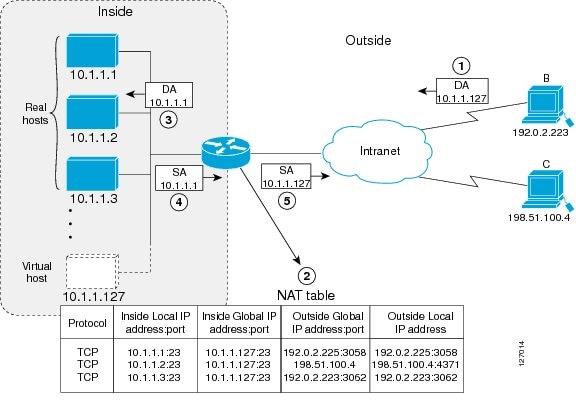Prerequisites for Configuring NAT for IP Address Conservation
Access Lists
All access lists that are required for use with the configuration tasks that are described in this module must be configured before initiating a configuration task. For information about how to configure an access list, see the IP Access List EntrySequence Numbering document.
 Note |
If you specify an access list with a NAT command, NAT will not support the permit ip any any command. This command is commonly used in an access list. |
NAT Requirements
Before configuring NAT in your network, ensure that you know the interfaces on which NAT is configured and for what purposes. The following requirements help you decide how to configure and use NAT:
-
Define the NAT inside and outside interfaces if:
-
Users exist off multiple interfaces.
-
Multiple interfaces connect to the internet.
-
-
Define what you need NAT to accomplish:
-
Allow internal users to access the internet.
-
Allow the internet to access internal devices such as a mail server.
-
Allow overlapping networks to communicate.
-
Allow networks with different address schemes to communicate.
-
Allow networks with different address schemes to communicate.
-
Redirect TCP traffic to another TCP port or address.
-
Use NAT during a network transition.
-
From Cisco IOS XE Denali 16.3 release, NAT support is introduced on Bridge Domain Interface (BDI) for enabling NAT configuration on the BDI interface.




 Feedback
Feedback